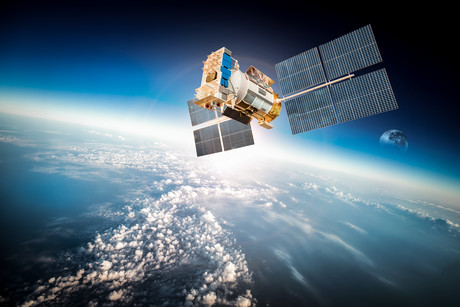Sophisticated CSIRO satellite boosts Australian space capability

One of the most sophisticated satellites in the world has been secured by the CSIRO.
The NovaSAR satellite gives Australian scientists direct control over which data the satellite will collect, as well as providing access to an advanced form of radar technology known as S-band Synthetic Aperture Radar, or S-band SAR. This provides high-resolution images of Earth from space.
Developed by UK-based Surrey Satellite Technology Ltd (SSTL), and with a payload supplied by Airbus UK, this S-band SAR technology is a significant advancement on current civilian satellite capability.
It enables images to be taken day and night, and through cloud cover, which is especially useful in tropical zones and cloud-affected areas.
CSIRO and SSTL have agreed to a 10% share of ‘tasking and acquisition’ time on the NovaSAR satellite. Under the terms of the agreement, worth $10.45 million over seven years, CSIRO has the right to direct the satellite’s activity over Australia, download and process data, and make these data available to the wider research community.
Some of the practical applications for NovaSAR satellite data and associated research projects include:
- rapid natural disaster identification, monitoring and assessment including bushfires, cyclones, floods, earthquakes, pollution and oil spills;
- improved infrastructure and agriculture mapping in Northern Australia;
- monitoring crops and assessing factors such as plant biomass and soil moisture;
- detection of illegal deforestation;
- flood risk assessment;
- monitoring shipping routes and detecting illegal activity.
Australia’s Federal Minister for Industry, Innovation and Science, Arthur Sinodinos, said the agreement was a timely investment in Australia’s space capability.
“Australia is one of the largest users of Earth Observation from Space data worldwide, with satellite data underpinning more than 100 state and federal resource mapping and environmental monitoring programs across Australia,” Sinodinos said.
“This agreement will allow CSIRO, via its national facility management capability, to strengthen Australia’s delivery of excellence in science and innovation. It will help CSIRO lead our nation’s development in the technical and analytical capability of modelling, monitoring and analysing our natural resource management and approaches to infrastructure.
“This will also lead to better and more informed support for policy and decision-making and, ultimately, our economic development as a nation.”
The aim is to manage the NovaSAR satellite as a natural extension of the significant role CSIRO already plays in managing a range of national facilities.
“Because we’ll be able to direct the satellite’s activity, it provides significant opportunities to support a wide range of existing research, further develop Australia’s earth observation data analytics expertise and create new opportunities in the field of remote sensing,” said Dr Dave Williams, executive director of Digital, National Facilities and Collections at CSIRO.
The NovaSAR-S technology enables constant data collection, regardless of daylight or weather conditions, which is particularly important for this continent with an area with a tropical climate and a large coastline territory.
CSIRO is Australia’s national science agency. For 100 years it has delivered positive impact from science and technology, including a successful history in the space sector.
The NovaSAR satellite will be managed in the Space Program of CSIRO’s Astronomy and Space Science group. This team already successfully manages the Australian Telescope National Facility (ATNF) comprising Parkes, the Compact Array and ASKAP.
5G mmWave extended to 14 km in nbn field trials
Live field trials of 5G mmWave technology in parts of the nbn Fixed Wireless network achieved...
Mavenir and Terrestar achieve NTN Voice over NB-IoT call
The achievement was conducted over a 3GPP-standardised NTN S-band spectrum, avoiding interference...
Canada to purchase $6.6bn Australian radar system
Canada intends to purchase an Australian-developed, over-the-horizon long-range radar system, in...





